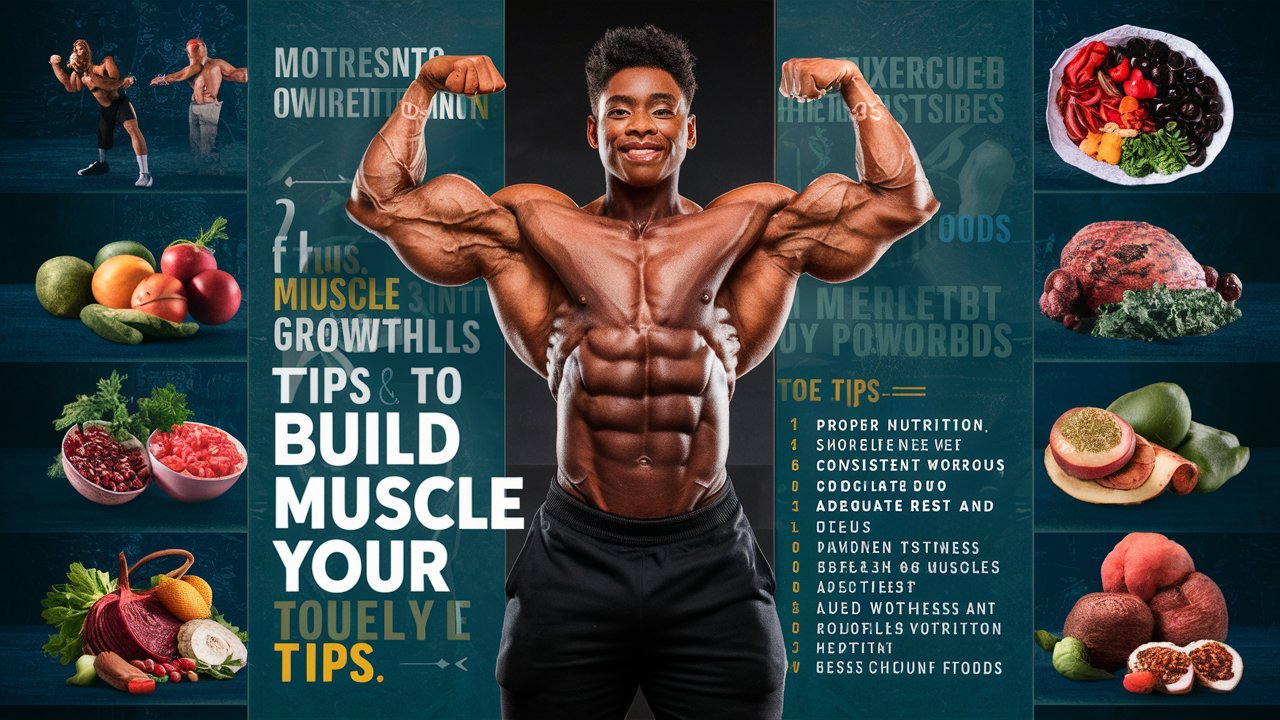Why do we need to build muscle?
The craze of building muscles is not just for the looks. But also promotes our good physical health. Building muscles helps us in completing our everyday’s daily tasks without any hustle. The more muscle you have, the more easy everyday task is for you. Muscles helps are body to contract. There are several other benefits of building muscles-
- Promotes metabolism:- If you are someone who is facing frequent digestive issues, then gaining muscle mass will help you to boost metabolism that will promote your good digestion.
- Increased bone mass- Building muscles help you to gain more bone mass.
- Better posture- If you are suffering from the bad posture you must build muscle to get the straight backbone.
- BMI- It will help you to get the good body mass index.
- Prevents osteoporosis – It will make your ligaments more flexible so your joints are not going to pain.
Have you ever felt muscle cramps? They are caused due to the de hydration and the mineral deficiency. So to avoid those cramps one should hydrate themselves and take a proper vitamin and mineral rich diet.
Having each additional pound of muscle affords many advantages such as improved performance, revved-up metabolism, and health benefits. Having lots of fat on body invites many serious health problems. It’s really very crucial to maintain healthy weight. For example, there are two people with same weight but one is on the slimmer side and another one is fatty. So what’s the difference between these two that makes the outer body of these two people different? It’s the muscle and the fat. If your body has more muscles then it would be thin and muscular but if your body has more fat than your body will look saggy. Muscle takes less space and makes your body look like strong and tight whereas fat takes lots of portion so more fats makes you look like chubby and your skin starts sagging.This article is all about wellhealthorganic: how to build muscle know tips to increase muscles. So, without just talking let’s get straight into the work.
Significance of Resistance Training
The process of gaining muscle is called Hypotrophy and is often achieved through Resistance Training. Some might call it weight training but fundamentally there isn’t any significant difference. Mostly revolves around challenging your muscles with exercises that force them to work harder than they’re accustomed to.
There are numerous ways to achieve it like – lifting weights, using resistant bands, exercising machines or even with your body weight. In case you don’t have fancy pieces of equipment you can perform Squats, lunges, pushups, pullups, dips, etc at home easily. As you begin to perform these exercises, you will cause micro-tears in your muscle fibres.
Don’t worry, it’s part of the process and healthy for the overall health of your body’s muscle coordination. These tears instigate a healing process in your body, which in return leaves you with new, bigger and stronger muscle tissues.
Building Muscle Safely And Efficiently: Enforcing Proper Form
Just as pushing your limits could lead you to better results alike proper form is equally crucial. Utilizing proper form serves as a safety measure, ensuring that you’re targeting the correct muscles while minimizing the risk of injury. To maintain a good posture you should avoid lifting excessively heavy weights which might cause jerky motion, leading to unwanted injuries. People often start with lifting more weight thinking this will help them to gain muscle faster. But this is not the case; you should go step by step. 1st lift the lighter weight then medium and at last when your trainer allows you to lift more bulky weight then you should do that. If you will not follow the instructions then there are more chances that you are going to injure yourself.
You must keep in mind that your lifts should be in a controlled and deliberate manner. A Uplifted chest, straight back and an engaged core would lead you to more stability throughout the exercises. Posture matters a lot while you are lifting the weight. Incorrect posture can lead to severe injuries and back pain. Last but not least, aiming for a full range of motion should be your top priority. It leads to more muscle concentration without compromising proper form at the end of the movement.
Acknowledging Rest, Recovery, And Diet
While it is true that lifting weights could lead you towards gaining muscle it is also true that it represents just 20% of the entire process. The rest of the process involves diet, rest and recovery.
Consuming nutrient-rich food will improve your muscle mass and will help you in achieving wellhealthorganic: how to build muscle know tips to increase muscles. Food is the best doctor that can heal us and provide us with sufficient energy. It totally depends upon us that what we are consuming. The food we are consuming is what we are. So consuming a diet that is rich in nutrition and anti- oxidant will make you muscular. Whereas the wrong diet choices will lead more fat in your body by storing toxins, undigested food and excess calories in the form of fat that is really very typical to get rid of. A well-balanced diet is crucial for muscle building, with a focus on three key fundamental components: protein, complex carbs, and good fats.
- Protein: protein is the backbone of muscle, and must be consumed in proportion to 0.8-1 gram per pound per body weight. lean meats, poultry, fish, eggs, dairy and legumes are some of the richest sources of protein.
Mostly you must try to eat the plant based proteins. These proteins are easier to digest and do not cause any disease to your body. Plants are known as the producers. They make their food from the sunlight. So if we want to take the maximum level of energy we should rely on the plant products. We all know about the food chain that goes from the producers to the primary consumer then secondary consumer and at last the tertiary consumers. So the energy level from the producers to the tertiary consumer decreases. That is why it’s recommended to eat the food that we get directly from the plants.
- Complex Carbs: Complex carbs keep you full for a longer period, which can contribute to longer workouts. You can easily find it in whole-grain products, beans, fruits, and vegetables. These are good for your health too. Your body will love this diet. As the complex carbs help your body to flush out all the toxins. After including carbs in your diet you will have a good bowel movement. You will start feeling relaxed and energetic. Because now you are not lifting the weight of toxins in your body.
- Healthy Fats: Serves as a crucial element for hormone production and general wellness. Healthy fatty acids are generally present in avocados, nuts, seeds, and fatty fish. Healthy fats means a hand full of nuts of all varieties. You can also take sugar free granulla. It will give you instant energy and is perfect for munching and snack time. Nuts are rich in various minerals and vitamins, omega 3, zinc and other vital nutrients. So this is the best option for completing the requirement of healthy fats.
Basics of Building Muscles
Building muscle involves several fundamental principles:
1) Resistance Training: Engage in strength training exercises such as weightlifting, bodyweight exercises, or resistance bands to stimulate muscle growth.
2) Progressive Overload: Continuously challenge your muscles by gradually increasing the intensity, volume, or weight of your workouts.
3) Proper Nutrition: Consume adequate protein, carbohydrates, and healthy fats to fuel your workouts and support muscle repair and growth.
4) Rest and Recovery: Allow your muscles time to recover and grow stronger by incorporating rest days into your routine and ensuring quality sleep.
5) Consistency: Stay consistent with your workouts and nutrition plan to see long-term muscle growth.
Tips For Gaining Muscles
- Set Specific Goals: Decide how much muscle you want to gain and set achievable targets.
- Prioritize Protein: Ensure your diet includes enough protein to support muscle growth. Aim for around 1 gram of protein per pound of body weight per day.
- Get Sufficient Sleep: Aim for 7-9 hours of quality sleep per night to support muscle recovery and growth.
- Follow a Progressive Training Program: Gradually increase the intensity and volume of your workouts to stimulate muscle growth.
- Include Compound Exercises: Focus on compound movements like squats, deadlifts, and bench presses, which engage multiple muscle groups simultaneously for efficient growth.
- Stay Hydrated: Drink plenty of water throughout the day to support muscle function and recovery.
- Consider Supplements: Creatine supplements can help improve muscle gains, but consult with a healthcare professional before adding any supplements to your routine.
Choosing Right Amount of Weight
- Focus on Proper Form: Prioritize using a weight that allows you to maintain proper form throughout the exercise to minimize the risk of injury and maximize muscle engagement.
- Consider Muscle Fatigue: Choose a weight that causes your muscles to fatigue within the desired rep range. This ensures you’re challenging your muscles sufficiently for growth.
- Progress Gradually: Start with lighter weights and gradually increase the load as your strength improves. Incrementally adding weight helps prevent injury and allows for consistent muscle growth.
- Listen to Your Body: Pay attention to how your body responds to different weights and adjust accordingly. If a weight feels too light or heavy, make appropriate adjustments to ensure optimal muscle stimulation.
Choosing Exercises Well
- Compound Movements: Prioritize compound exercises like squats, deadlifts, bench presses, and pull-ups. These engage multiple muscle groups simultaneously, maximizing muscle growth.
- Squats: Considered the king of muscle-building exercises, squats target the lower body and core, stimulating overall muscle growth.
- Bench Press: A fundamental exercise for building upper body strength and muscle mass, particularly targeting the chest, shoulders, and triceps.
- Deadlifts: Engage the posterior chain, including the lower back, glutes, and hamstrings, promoting overall muscle development and strength.
- Pull-ups: Target the back, biceps, and forearms, helping to build a strong and well-defined upper body.
- Lat Pull-downs: Similar to pull-ups, lat pull-downs engage the back muscles, providing an alternative for individuals unable to perform pull-ups.
The Muscle-Building Formula:
Building muscle boils down to three key factors:
Strength Training: This is the key to stimulating muscle growth. Aim for 2-3 strength training sessions per week, targeting all major muscle groups.
Proper Nutrition: Focus on eating enough protein, healthy fats, and complex carbohydrates to fuel your workouts and provide the building blocks for muscle.
Adequate Rest: Give your muscles time to recover between workouts. Aim for 7-8 hours of sleep each night.
Step-by-Step Guide to Building Muscle

Now, let’s get down to the nitty-gritty! Here are actionable steps to get you started:
Strength Training 101:
- Choose Your Weapons: Weights, resistance bands, or even your own body weight can be used for effective strength training. Start with exercises you feel comfortable with and gradually increase the weight or difficulty as you get stronger.
- Compound Lifts: Focus on compound exercises that work multiple muscle groups at once. Examples include squats, lunges, push-ups, rows, and deadlifts.
- Isolation Exercises: Include some isolation exercises to target specific muscle groups, like bicep curls or tricep extensions.
- Reps and Sets: Aim for 8-12 repetitions per set and 2-3 sets per exercise. If you can easily do more than 12 reps, it’s time to increase the weight or difficulty.
- The form is Key: Proper form is crucial to prevent injuries and maximize muscle growth. Don’t be afraid to ask a trainer or gym buddy for guidance if you’re unsure about an exercise.
Sample Beginner Workout:
Here’s a simple workout routine you can do at home or the gym, 2-3 times per week:
- Squats: 3 sets of 8-12 reps
- Push-ups: 3 sets of as many reps as you can comfortably do (modify on your knees if needed)
- Lunges: 3 sets of 8-12 reps per leg
- Rows: 3 sets of 8-12 reps (can be done with dumbbells or resistance bands)
- Plank: Hold for 30 seconds, repeat 3 times
Nutrition for Muscle Growth
In addition to regular strength training, proper nutrition plays a crucial role in supporting muscle growth and recovery. Here are some key dietary tips to maximize your muscle-building efforts:
- Protein Intake: Aim to consume an adequate amount of protein, which is essential for muscle repair and growth. Good sources of protein include lean meats, poultry, fish, eggs, dairy products, legumes, and tofu.
- Carbohydrates for Energy: Carbohydrates are your body’s primary source of energy during exercise. Include complex carbohydrates such as whole grains, fruits, vegetables, and legumes in your diet to fuel your workouts and support muscle recovery.
- Healthy Fats: Don’t skimp on healthy fats, which are important for hormone production and overall health. Incorporate sources of unsaturated fats such as avocados, nuts, seeds, and olive oil into your meals.
- Hydration: Staying hydrated is essential for optimal performance and recovery. Drink plenty of water throughout the day, especially before, during, and after your workouts.
Supplements for Muscle Growth

While proper nutrition should always be your primary focus, certain supplements may complement your muscle-building efforts. Here are a few supplements that are commonly used by individuals looking to increase muscle mass:
Fuel Your Muscles:
- Diet is just as important as exercise for building muscle. Here are some key points to remember:
- Protein is King: Aim for 1.4-2 grams of protein per kilogram of body weight daily. Lean protein sources like chicken, fish, beans, lentils, and tofu are excellent choices.
- Carbs for Energy: Don’t skip carbs! Complex carbohydrates like whole grains, fruits, and vegetables provide sustained energy for your workouts.
- Healthy Fats: Include healthy fats like nuts, seeds, and avocados in your diet. These fats are essential for hormone production and overall health.
- Stay Hydrated: Water is crucial for all bodily functions, including muscle recovery. Aim to drink plenty of water throughout the day.
- Track Your Calories: If you’re serious about building muscle, consider tracking your calorie intake. You might need to be in a slight calorie surplus (eating a few hundred more calories than you burn) to support muscle growth.
Bonus Tips for Muscle Building:
Warm-up and Cool-down: Always warm up before your workout with light cardio and dynamic stretches to prepare your muscles for exercise. Cool down afterward with static stretches to improve flexibility and reduce muscle soreness.
Track Your Progress: Monitor your progress by taking measurements, keeping a workout log, or taking progress photos. Seeing improvement can be a great motivator.
Be Patient: Building muscle takes time and dedication. Don’t get discouraged if you don’t see results overnight. Consistency is key!
Find a Workout Buddy: Working out with a friend can make exercise more enjoyable and keep you accountable.
Consult a Professional: If you’re new to strength training or have any health concerns, consider consulting a certified personal trainer for guidance. They can create a personalized workout plan and ensure you’re using the proper form to prevent injuries.
Building muscle is a journey, not a destination. By following these simple steps and making healthy lifestyle choices, you’ll be well on your way to achieving your fitness goals and building a stronger, healthier you!
